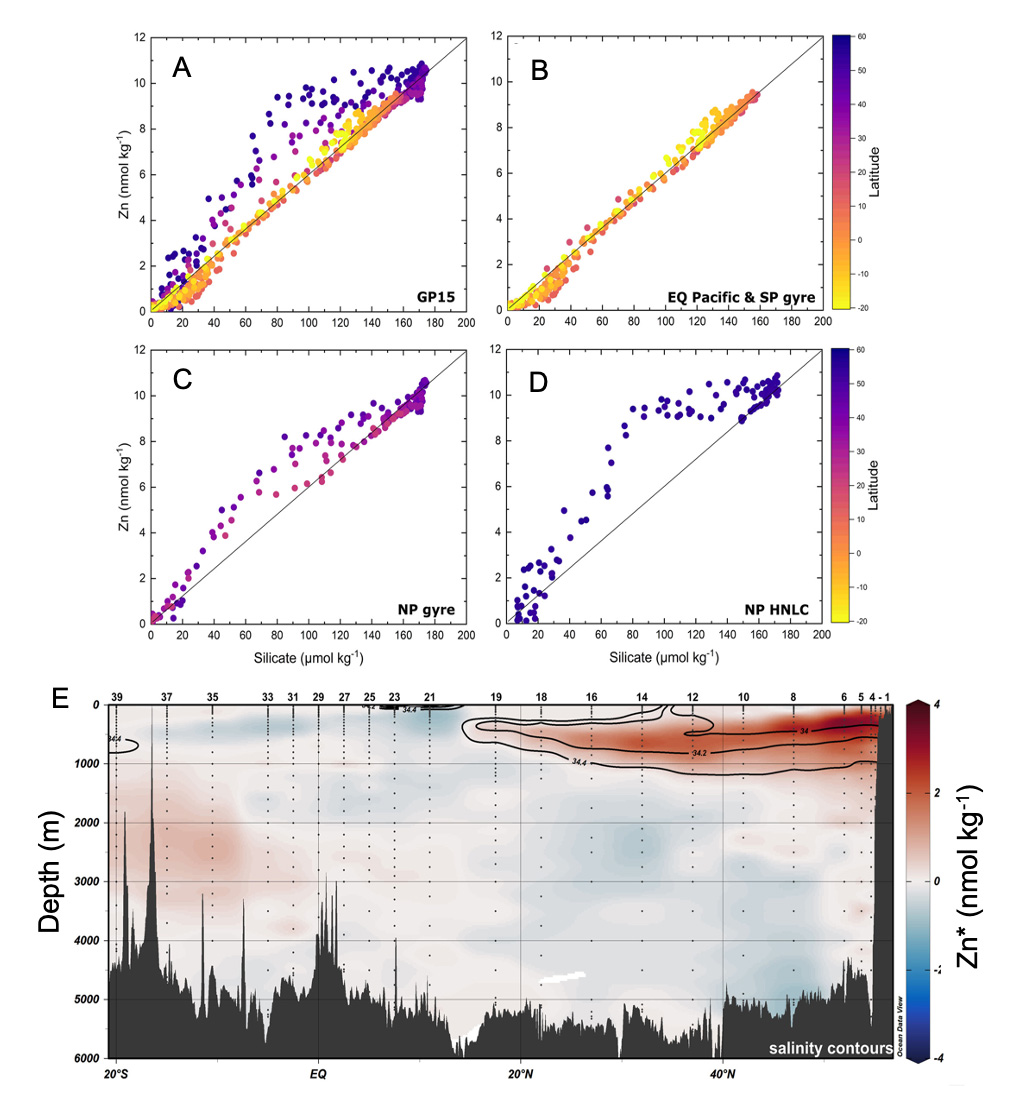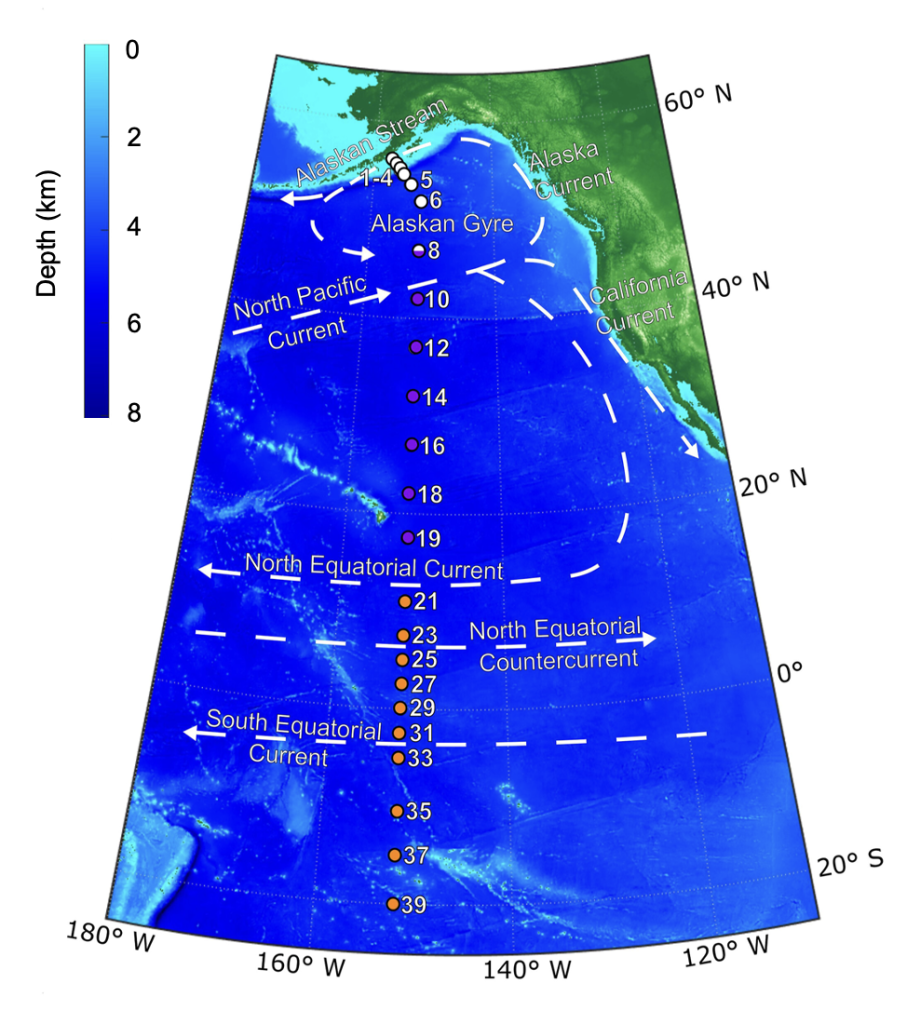The North Pacific Ocean, a key actor for the zinc oceanic cycle
For years, the zinc (Zn) oceanic distribution raises a paradox: while the global zinc/silicon (Zn/Si) relationship is quasi perfect, spectroscopic biological studies have demonstrated that Zn is associated with phosphate, not silicate, in diatom cells (Twining et al., 2014, read science highlight). Thus, how to explain that Zn is regenerated deeper than phosphate, leading to a overall linear Zn/Si correlation? Based on the measurements of dissolved Zn concentration and isotopic compositions (δ66Zn) along the GEOTRACES GP15 cruise section (from Alaska to Tahiti along 152°W), Sieber and his colleagues (2023, see reference below) lift the veil on some of the mechanisms that control the behavior of Zn in the Pacific Ocean, and more globally.
Interestingly, their data reveal a convex relationship between Zn and Si in the north Pacific, contrasting with a linear relationship in the Southern part of the section (equatorial and tropical parts). The main findings of this study are:
- Using a mechanistic model, they show that reversible scavenging is required as an additional process transferring Zn from surface to depth, explaining a deep Zn concentration maximum below the PO4 maximum that is not specifically linked to Si.
- Reversible scavenging together with fractionation during ligand assimilation provides an explanation for the observed isotope distribution. More specifically, it leaves subsurface upper ocean waters imprinted by lower δ66Zn. Deeper, release of heavy Zn then coincides with the PO4 maximum during particle remineralization, causing a subtle mid-depth δ66Zn maximum.
For the first time, making use of δ66Zn data from a crossover station between US GP15 and Japanese GEOTRACES GP02, the authors were able to show that this mechanism of scavenging of isotopically heavy zinc is linked to seasonal physical stratification and is an important process influencing surface and subsurface δ66Zn signals in the North Pacific Ocean. Globally, it also provides an explanation for isotopically light Zn at shallow depths and corresponding elevated mid-depth δ66Zn signals, seen dominantly in ocean regions away from strong Southern Ocean control.


Reference:
Sieber, M., Lanning, N. T., Bian, X., Yang, S. ‐C., Takano, S., Sohrin, Y., Weber, T. S., Fitzsimmons, J. N., John, S. G., & Conway, T. M. (2023). The Importance of Reversible Scavenging for the Marine Zn Cycle Evidenced by the Distribution of Zinc and Its Isotopes in the Pacific Ocean. Journal of Geophysical Research: Oceans, 128(4). Access the paper: 10.1029/2022jc019419
Twining, B. S., Nodder, S. D., King, A. L., Hutchins, D. A., LeCleir, G. R., DeBruyn, Jennifer M.; Maas, E. W., Vogt, S., Wilhelm, S. W., Boyd, P. W. (2014). Differential remineralization of major and trace elements in sinking diatoms. Limnology and Oceanography, 59(3), 689–704. Acess the paper: 10.4319/lo.2014.59.3.0689
